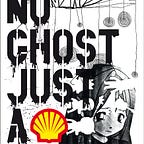A History of Canada by Montreal Metro: Longueuil-Université-de-Sherbrooke
The 1660 battle of Longue-Sault on the Saint Lawrence west of Montreal is one of the most commemorated battles in the history of Montreal, deserving of reliefs at the foot of the statue of de Maisonneuve in Place-D’Armes and a specific commemoration at the north-west corner of Parc Lafontaine. In the standard telling, of which Dollier de Casson, writing about a decade after the events described, is the locus classicus, the fifteen or sixteen men who ventured from the island saved the settlement and the New France from destruction by the Iroquois. Even here though the debates leading up to the venture reveals much about the thinking of the French in Montreal, as well as the alliances they formed with the Algonquin and Huron.
The principle bone of contention was not if, but when the venture would be made. Its leader, Dollard, “a boy of good heart and family, who had some commandments in the armies of France,” wished for the thing to be done in late April or early May. The greats of the settlement, de Maisonneuve, Charles Le Moyne of Longueuil, wanted to join them but preferred to leave after the sowing season. This would increase their number to forty, but:
If the thing were deferred Dollard would not have the honor of command, so he pushed the most he could and more dreading the lack of distinction. Besides, it could serve him better because of some business that had happened in France, and so it was resolved.
Arriving at Longue-Sault, they met and attacked a party of Iroquois. Many of these died, but some escaped vowing to bring five hundred, later nine hundred, of their warriors “to abolish and ruin all that was French in Canada.” In conclusion, de Casson writes that:
No doubt they would have taken Quebec and Three Rivers without difficulty; As for Montreal, there they were still ordinarily poorly received and by force obstinately harrassed it. Seeing how everything turned out, what they said would seem to have been true if our 17 French had not diverted the fatal blow by their valiant death.
Even at first glance the account seems incoherent. What impelled Dollard and the town to attack the Iroquois in the first place is unclear. There are no reports of an immanent attack or one on such a scale. Nor does the desire of the great men of the settlement to complete their sowing suggest urgency. Dollard himself is first presented as impatient for glory and with business matters in France. Is it wild speculation to say he had come to Canada hoping repay ruinous debts in France? By the end though he is saviour of the country. Significantly, this would be the time of year that the Iroquois would be returning with that most valuable commodity of beaver pelts. As for attitudes, the Algonquin and Huron who are with the French are referred to as savages or wild men and are omitted from the final seventeen who save the colony. Did they survive? Did de Casson, like de Maisonneuve, prefer “fewer brave men mixed abundance of goods?”
Source: Dollier de Casson, Histoire de Montréal. Ed by Marcel Trudel and Marie Baboyant (LaSalle, Que: Editions Hurtubise, 1992), p. 211.
